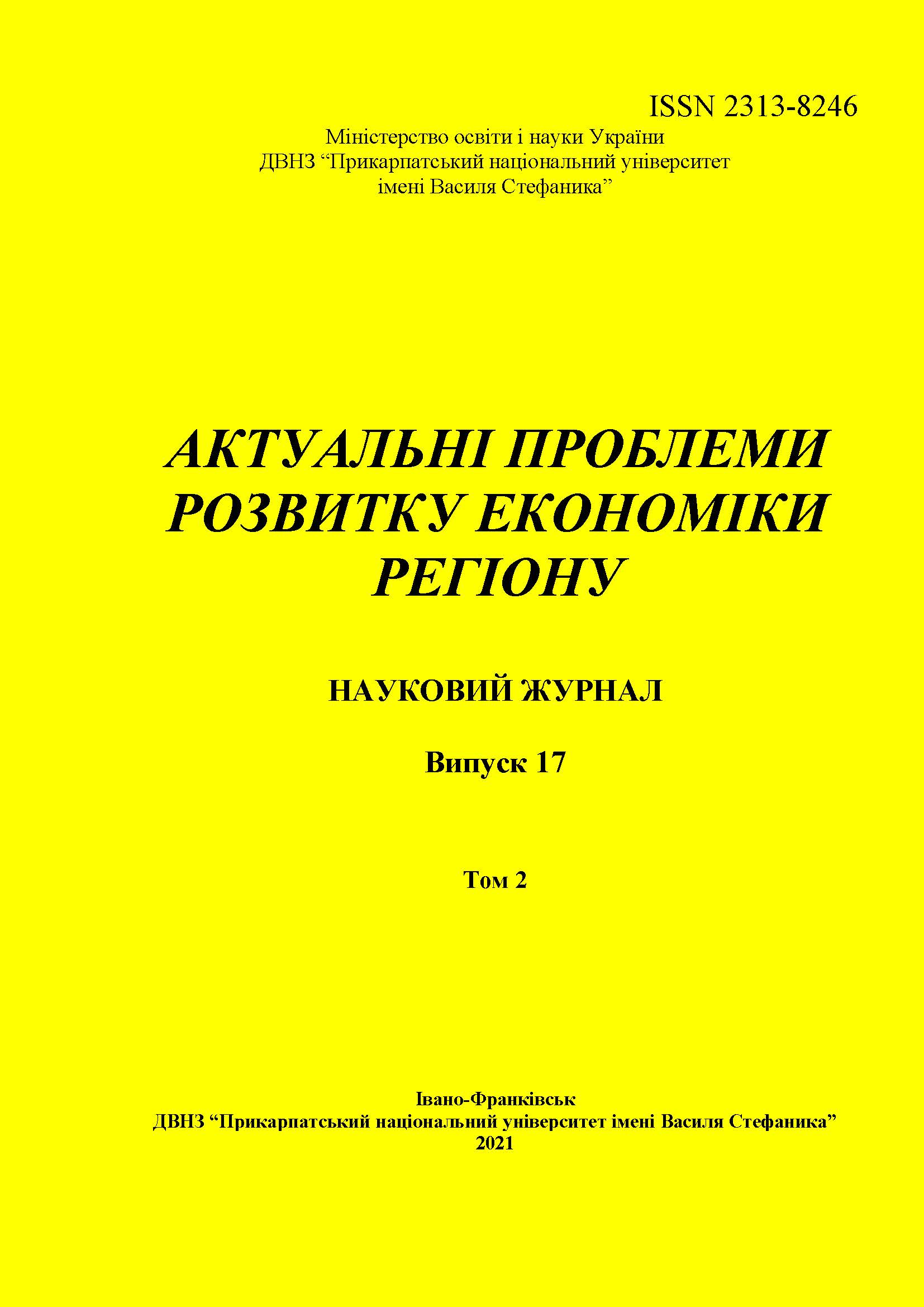DIGITAL MARKETING OF BANKING SERVICES: TRANSFORMATIONS IN THE PANDEMIC PERIOD
DOI:
https://doi.org/10.15330/apred.2.17.87-94Keywords:
digital marketing, banking services, pandemic, banks, bank stability ratingAbstract
The article substantiates the necessity of using digital marketing in banking activity. Banking services are studied in the pandemic period. The goal of the article is to present the scientific approaches to studying transformations in digital marketing of banking services in the pandemic period. Preparation of the current article involved applying a set of general scientific and special methods of research. In particular, inductive and deductive methods were used for collecting and processing of data concerning the number of operating banks; economic analysis and comparison were applied to compose the bank stability rating; graphic method and method of economic and mathematical modeling – for visual presentation and calculation of the expected indices of increase/decrease of the number of banks by the linear and polynomial functions; abstract and logical method – for theoretical generalization and conclusion making. The research confirms the reduction dynamics in the number of banks, both foreign and private in the period of 2017-2020. The similar tendency is expected in the next 3-4 years that is justified by the linear and polynomial functions, where the determination factor R2 is equal to 0.8325 by the linear function, and 0.8896 by the polynomial function that confirms the model reliability. It is substantiated that the highest position in the rating of banks' stability is occupied by Raiffeisen Bank, which remains the leader in the quality of service in the Ukrainian banking sector. The advantages of Raiffeisen Bank are a wide range of standard and innovative services (salary, private and pension payment cards, Internet banking, deposits, loans, etc.) and the presence of about 3 million customers. To improve the competitive positions at the market, banks should modify their services in the pandemic period. Therefore, it is necessary for the banks to use innovative technologies like virtual reality, Internet banking platform, introduction of “payment holidays” services, and use of technologies of virtual and augmented reality. It is substantiated that virtual technologies solve several problems, namely they act as marketing instruments, they solve the tasks of sale departments, they serve as communication and information channels.
References
2. Bochko, O. Yu. “Evolution of development of concepts of Internet marketing.” Marketing and Digital Technology: Sb. Material III Mizhnar. Sciences-Prak Conf. May 25-26. Odessa, TPP, 2018, pp 55-56.
3. Bochko, O. Yu. “Electronic marketing of the present.” Visnyk of Lviv National Agrarian University: Economy of Agroindustrial Complex, no. 20 (2), 2013, pp. 65-68.
4. Britchenko, I.H., Bieliavtsev, M.I., and N.M.Tiahunova. Marketing in banks: textbook, ed. by Britchenko I.H. Poltava, RVV PUSKU, 2008.
5. Karpishchenko, O.O., and Yu.E.Lohinova. “Digital marketing as an innovative instrument of communication.” Economic problems of sustainable development: proceedings of the International scientific and practical conference, devoted to the 20thh anniversary of the Faculty of Economics and Management of SumySU, Sumy, 3-5 April 2012. Sumy, SumySU, vol. 5, 2012, pp. 177-178.
6. Marchuk, O.O. “Digital marketing as an innovative instrument of management.” Economics and society, Issue 17, 2018., pp. 296-299.
7. “Supply of banking services during the quarantine.” Kirovogradske oblasna administratsiia, www.kr-admin.gov.ua/start.php?q=Aktualno/Ua/1404201/14042001.html. Accessed 21 Sept. 2021.
8. Nikitin, A.V., Ivanova, T.H., Britchenko, I.H., and O.M.Momot. Marketing in banks: scientific and methodic manual for self-studying of discipline. Kyiv, KSEU, 2012.
9. Oklander M. A., and O.O.Romanenko. “Specific differences in digital marketing from internet marketing.” Economic Bulletin of the National Technical University of Ukraine “Kyiv Polytechnic Institute”, no. 12, 2015, pp. 362–371.
10. Ostapchuk, D. “Unplugged networks: who is guilty of 50-percent deflation of banks. Epravda, www.epravda.com.ua/publications/2016/07/21/599876/ Accessed 21 Sept. 2021.
11. Podpletko, K.”How VR/AR technologies are used by banks?” Modumlab, modumlab.com/blog/banking. Accessed 21 Sept. 2021.
12. Rysin, V.V., and A.P. Bida. “Financial stability of banks: factors and peculiarities of supply.” Efficient economics, www.economy.nayka.com.ua/pdf/3_2021/3.pdf. Accessed 21 Sept. 2021.
13. Spitsyn, I.O., and Ya.O.Spitsyn. Marketing in banks. Ternopol, JSC “Tarneks”; Kyiv, CMMS “Pispaip”, 1993. .
14. “What new banking services are available online for the customer during the quarantine?”. Bank Pivdennyi, bank.com.ua/news/yaki-novi-bankivski-poslugi-dostupni-kliyentam-distanciyno. Accessed 21 Sept. 2021..
15. Yankovska, L.A., Semchuk, Zh.V., Kharuk, K.B., Bochko, O.Yu., and R.M.Skrynkoskyi. Banking marketing: textbook. Lviv “Halytska vydavnycha spilka”, 2016.
16. Frost, Steven M. Desk book of banking Analyst: the money, the risks and the professional techniques. Dnipropetrovsk, 2013.
17. Minfin, minfin.com.ua. Accessed 21 Sept. 2021.
Downloads
Published
Issue
Section
License
- Authors retain copyright and grant the journal right of first publication with the work simultaneously licensed under a Creative Commons Attribution NonCommercial NoDerivs 4.0 Unported License that allows others to share the work with an acknowledgement of the work's authorship and initial publication in this journal.
- Authors are able to enter into separate, additional contractual arrangements for the non-exclusive distribution of the journal's published version of the work (e.g., post it to an institutional repository or publish it in a book), with an acknowledgement of its initial publication in this journal.
- Authors are permitted and encouraged to post their work online (e.g., in institutional repositories or on their website) prior to and during the submission process, as it can lead to productive exchanges, as well as earlier and greater citation of published work (See The Effect of Open Access)


